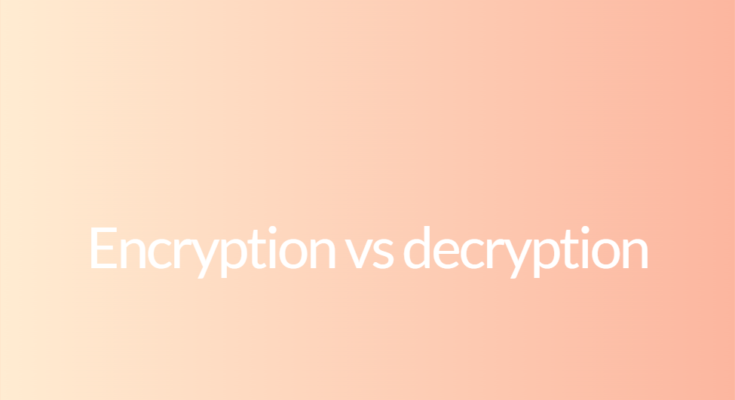Introduction:
Encryption and decryption are both essential components of cryptography, a method used to secure and protect sensitive information. While they are closely related, encryption and decryption serve different purposes in the process of keeping data secure. In this article, we will explore the differences between encryption and decryption and how they are used in practice.
Difference between Encryption and Decryption:
Encryption:
Encryption is the process of converting plain, readable data into an unreadable format called ciphertext. The primary goal of encryption is to ensure the confidentiality and integrity of data. It is achieved by applying a specific algorithm, known as a cipher, to the original data. The resulting ciphertext can only be deciphered and understood by individuals who possess the encryption key or the necessary credentials.
Decryption:
Decryption, on the other hand, involves converting the ciphered or encrypted data back into its original, readable form. It is the reverse process of encryption and requires a decryption key to convert the ciphertext back to plaintext. Decryption is typically performed by authorized individuals who possess the necessary key or credentials to decipher the data.
Key Differences:
1. Purpose:
The main purpose of encryption is to protect data from unauthorized access, ensuring that only authorized individuals can view or interpret the information. Decryption, on the other hand, is used to retrieve the original data from the encrypted form.
2. Process:
The process of encryption involves transforming plain text into ciphertext by applying a specific algorithm and encryption key. This ensures that the data is secure and protected. Decryption, however, reverses this process by converting the ciphertext back into plain text using a decryption key.
3. Security:
Encryption provides security to data by converting it into an unreadable format, making it difficult for unauthorized individuals to understand or access. Decrypting the data requires the appropriate decryption key or credentials, which helps to maintain its confidentiality and integrity.
4. Usage:
Encryption is widely used in various scenarios, such as securing sensitive information during transmission over public networks, securing data at rest, and protecting user credentials. It is an essential part of technologies like SSL/TLS in web browsing and VPNs for secure communication. Decryption, on the other hand, is used when authorized users need to access or retrieve the original data from its encrypted form.
5. Algorithms:
There are multiple algorithms available for encryption and decryption, such as the Advanced Encryption Standard (AES), RSA (Rivest-Shamir-Adleman), and Data Encryption Standard (DES). These algorithms differ in complexity, key length, and security levels.
Conclusion:
In summary, encryption and decryption are two integral processes of cryptography and data security. Encryption converts plain text data into an unreadable format, while decryption reverses this process to retrieve the original data. Encryption ensures data confidentiality and integrity, protecting it from unauthorized access. Decryption, on the other hand, allows authorized individuals to access and retrieve the original data from its encrypted form. Both processes play a crucial role in securing sensitive information in various domains, such as online transactions, secure communication, and data protection.



